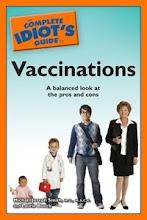A new study of optimism has had a lot of media buzz lately, in a society somewhat obsessed with measuring happiness. The study raises questions about how optimism affects health in adolescents.
The study of 5,634 tweens and teens in Australia, published recently in Pediatrics, found that the more optimistic the participants were, the less likely they were to develop symptoms of depression. This effect was especially apparent among girls ("A Prospective Study of the Effects of Optimism on Adolescent Health Risks").
The study participants were surveyed to find out whether their levels of optimism were very low, low, high, or very high. The gender differences in how optimism affected them were striking. "Compared with girls with very low levels of optimism," the authors wrote, "boys with the same level of optimism were approximately half as likely to be depressed."
Adolescent girls in the western world, who are more likely than adolescent boys to become depressed, are often expected to be cheerful and helpful. Are glum girls frowned upon where glum boys are tolerated? I worry that teen girls might feel pressured to deny or suppress occasional sadness, making those feelings more difficult to overcome.
Optimism can be difficult to measure, because people are often encouraged to act and think optimistically, whether or not they actually feel optimistic, so that they will be happier. But happiness is also a result of personality, history, life circumstances, and many other variables.
It's good to try to see the positive side of even difficult circumstances; an optimistic viewpoint is helpful in life. But it shouldn't be required all the time.
Showing posts with label teens. Show all posts
Showing posts with label teens. Show all posts
Tuesday, January 18, 2011
Thursday, July 2, 2009
Teen Safety Online and On the Road
How much freedom should teenagers have? They're certainly not children, but they're not yet adults either. Teens have less life experience and exercise poorer judgment than adults, even as they crave access to the adult world.
Experience and good judgement are especially critical in two areas that virtually define modern American adolescence: internet use and driving. The American Academy of Pediatrics' microsite on internet use for Internet Safety Month in June points out a range of problem behaviors that teens might encounter or engage in online, such as cyberbullying, online solicitation, and "sexting" (exchanging inappropriate or sexually explicit pictures of children and teens). The solution? Talking with your teenager about cyber safety and privacy, and monitoring and limiting the use of computers and cell phones.
Driving is also hazardous to teens' health, with car crashes the top cause of death in teens ages 15-19, according to Mothers Against Drunk Driving. Inexperience, distraction from other passengers in the car, cell phone use or texting while driving, and underage drinking all contribute to this problem. Graduated driver licensing (GDL) programs, now commonplace in most states, can make a difference in protecting teen drivers and others around them. For teenagers under age 18, these programs create curfews for night-time driving (when the risk for crashes increases in this group), limit the number of teenaged passengers in the car, and delay access to drivers' licenses if teens are cited for moving violations while they have their learner's permits. These rules force teens to build their driving skills up slowly until are mature enough for unrestricted driving. In some states, parents can also request a copy of their teen's driving record to see how they are doing.
Teenagers (and perhaps their parents) might chafe against restrictions and oversight, but these are the most effective ways to keep teens safe until adulthood. In one study in upstate New York, for example, a GDL program decreased injuries among 16-year-old drivers by 31%. These are also public health measures, protecting others from mistakes that teens might make. It's good to see American society figuring out practical ways to give adolescents both freedom and protection as they wend their way toward adulthood, a path that seems to become rockier with each new generation.
Experience and good judgement are especially critical in two areas that virtually define modern American adolescence: internet use and driving. The American Academy of Pediatrics' microsite on internet use for Internet Safety Month in June points out a range of problem behaviors that teens might encounter or engage in online, such as cyberbullying, online solicitation, and "sexting" (exchanging inappropriate or sexually explicit pictures of children and teens). The solution? Talking with your teenager about cyber safety and privacy, and monitoring and limiting the use of computers and cell phones.
Driving is also hazardous to teens' health, with car crashes the top cause of death in teens ages 15-19, according to Mothers Against Drunk Driving. Inexperience, distraction from other passengers in the car, cell phone use or texting while driving, and underage drinking all contribute to this problem. Graduated driver licensing (GDL) programs, now commonplace in most states, can make a difference in protecting teen drivers and others around them. For teenagers under age 18, these programs create curfews for night-time driving (when the risk for crashes increases in this group), limit the number of teenaged passengers in the car, and delay access to drivers' licenses if teens are cited for moving violations while they have their learner's permits. These rules force teens to build their driving skills up slowly until are mature enough for unrestricted driving. In some states, parents can also request a copy of their teen's driving record to see how they are doing.
Teenagers (and perhaps their parents) might chafe against restrictions and oversight, but these are the most effective ways to keep teens safe until adulthood. In one study in upstate New York, for example, a GDL program decreased injuries among 16-year-old drivers by 31%. These are also public health measures, protecting others from mistakes that teens might make. It's good to see American society figuring out practical ways to give adolescents both freedom and protection as they wend their way toward adulthood, a path that seems to become rockier with each new generation.
Subscribe to:
Posts (Atom)



